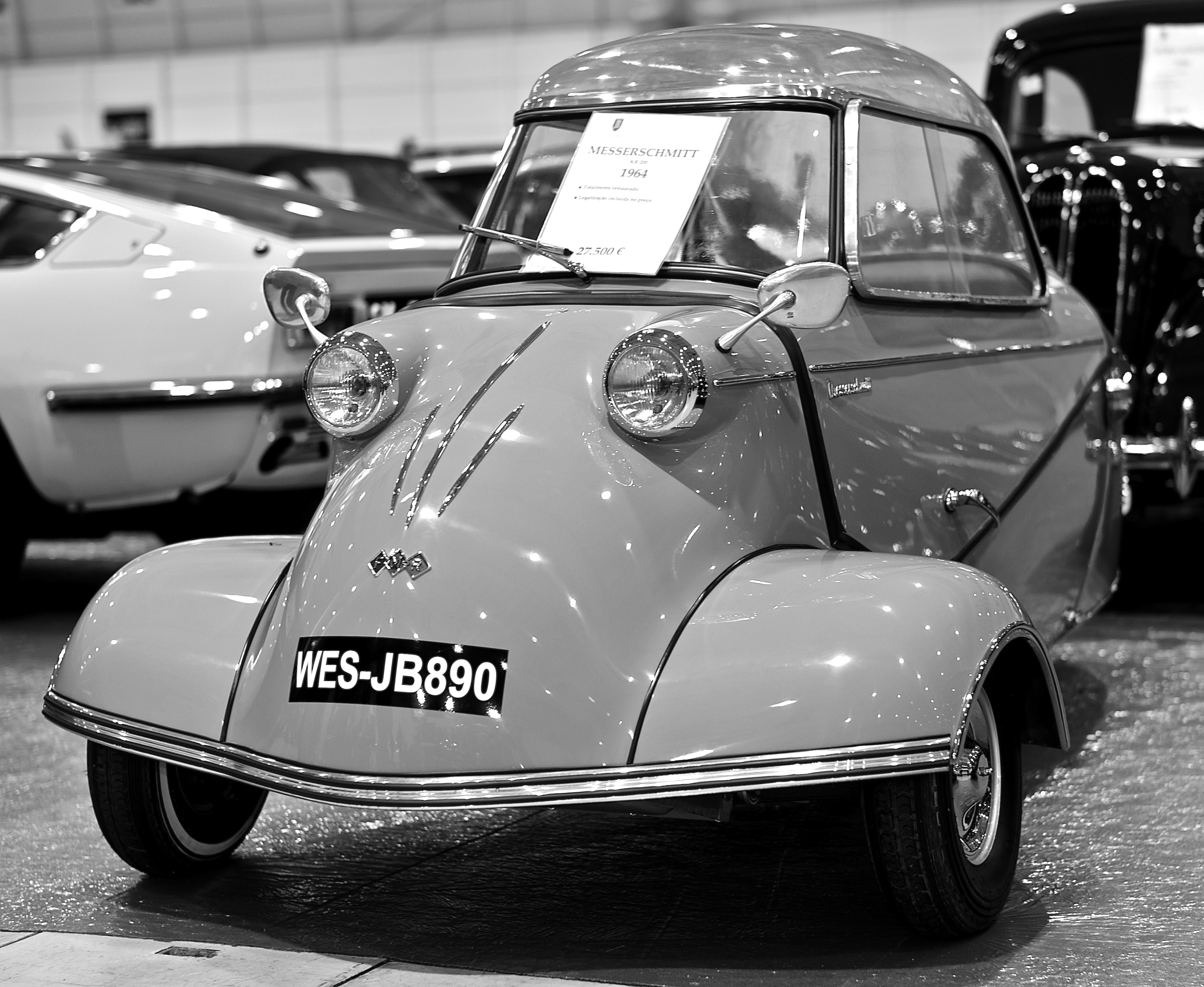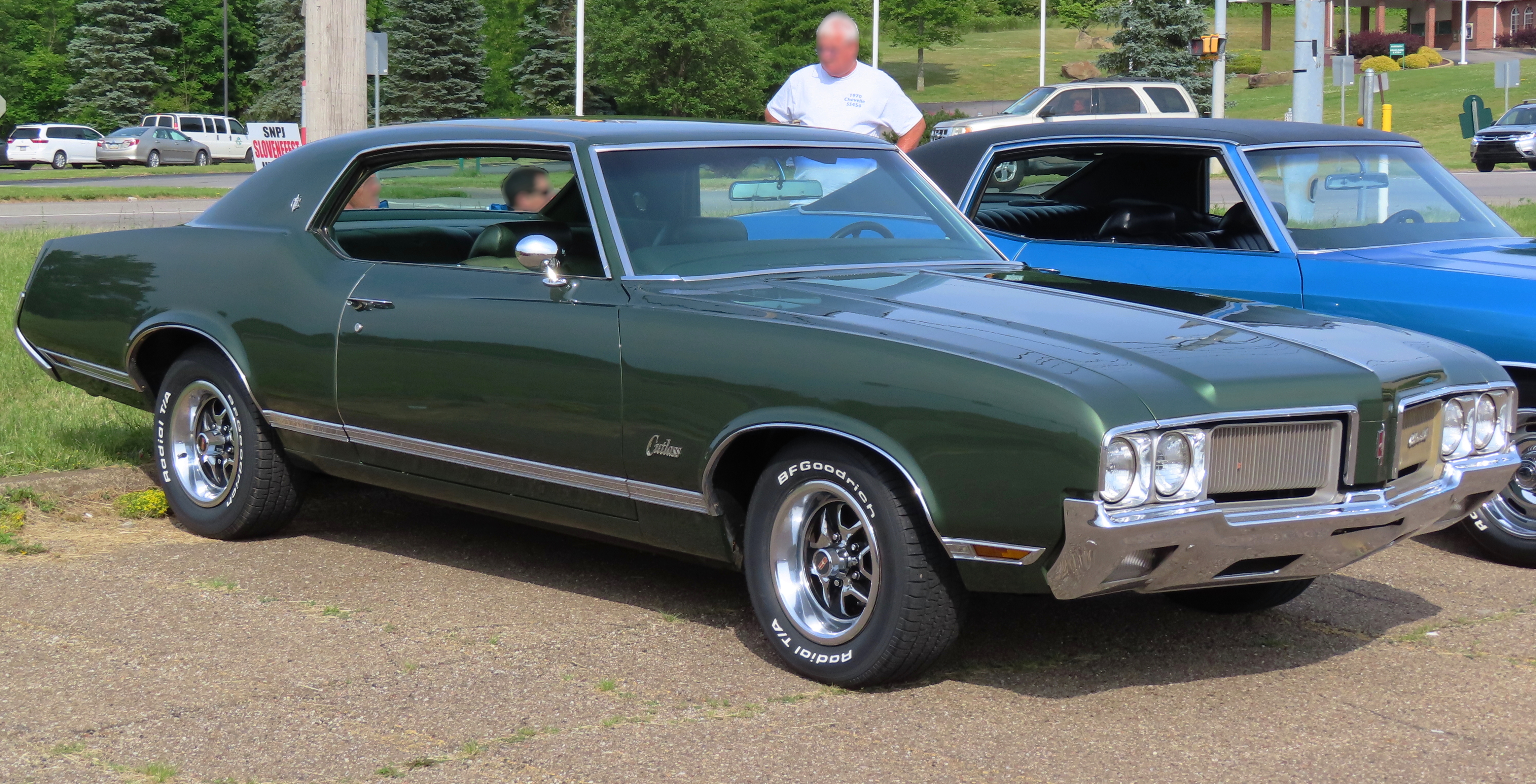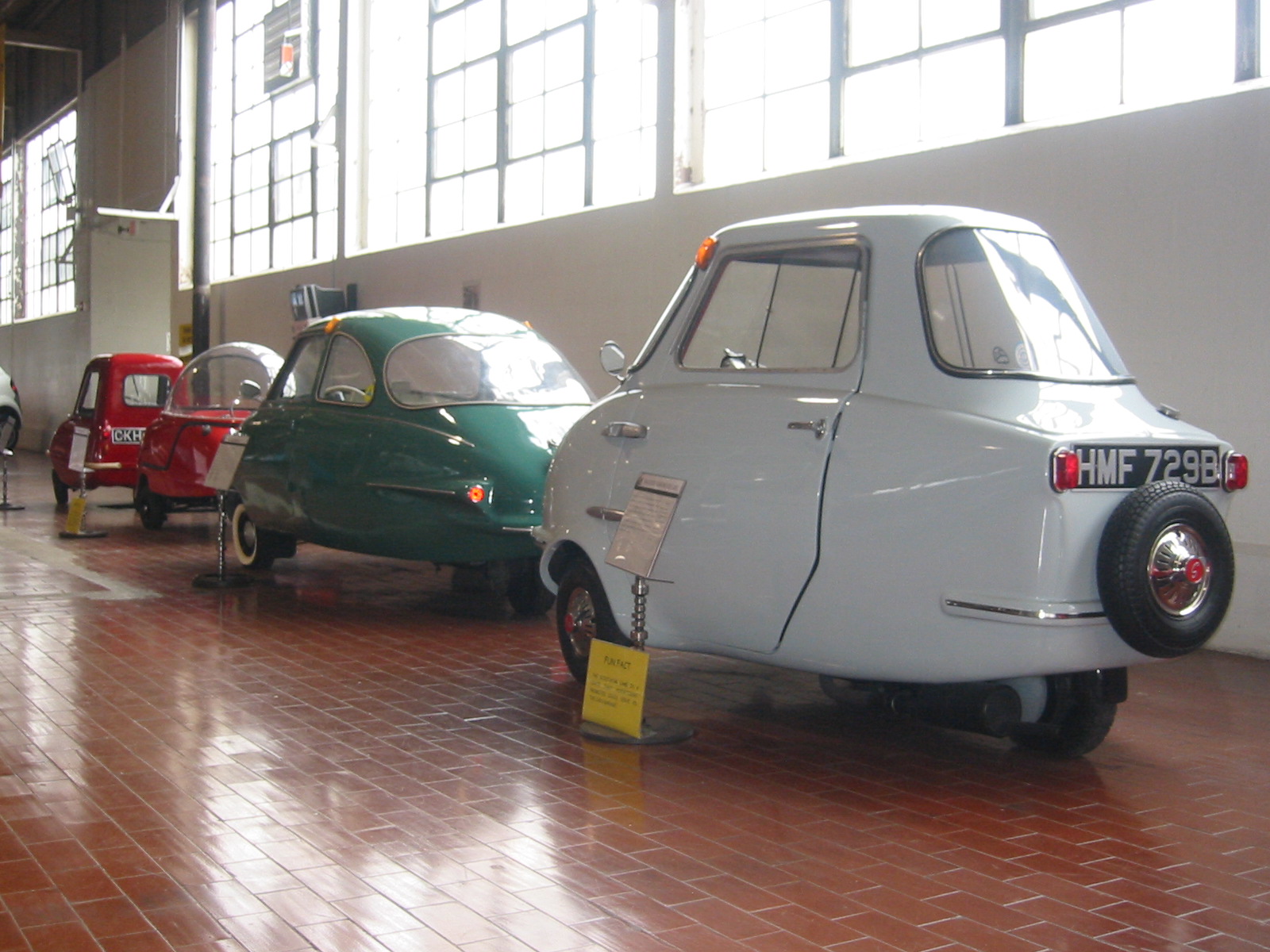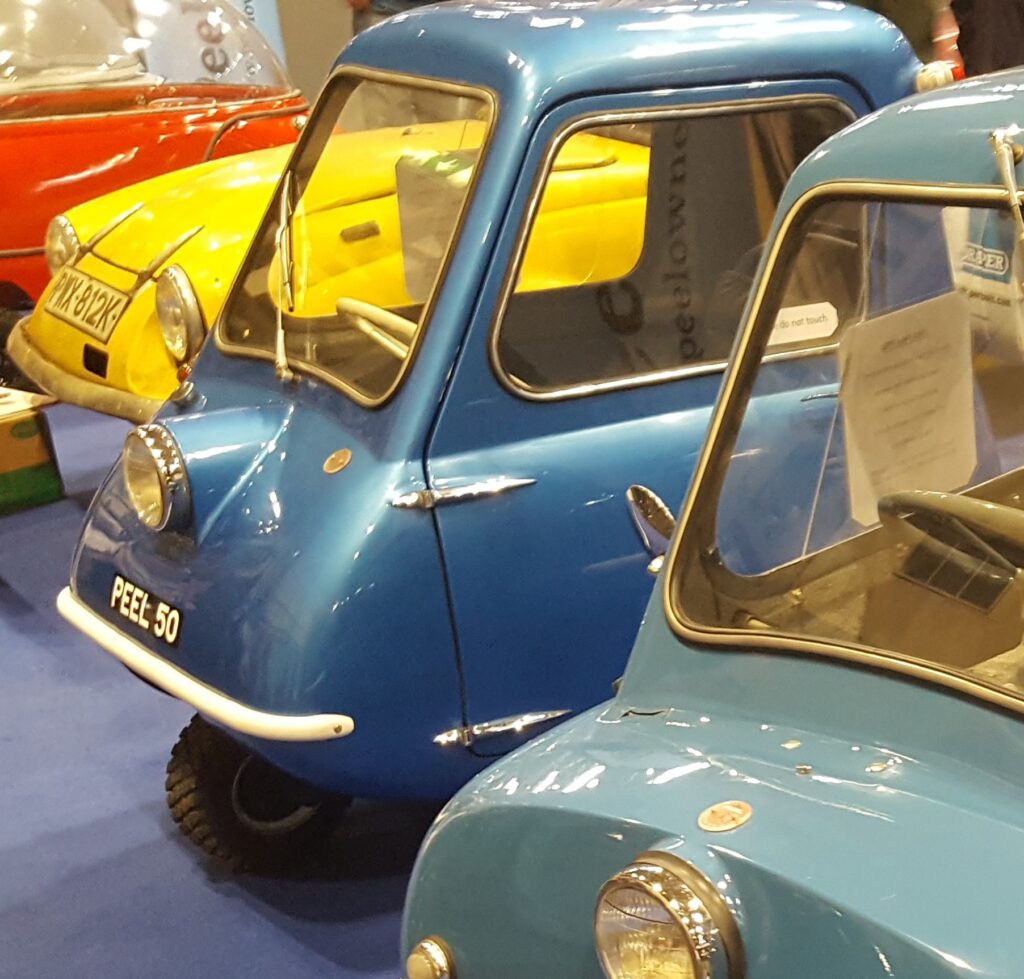
1. **Peel P50**: Produced between 1962 and 1965, this pint-sized marvel is the quintessential example of cars that disappeared almost as quickly as they emerged. Designed as a basic city car by Peel Engineering Company, the microcar was perfect for navigating tight spaces. Officially recognized as the smallest production car in the world, the P50 weighed merely 130 pounds and measured just 54 inches in length. Sporting a single-cylinder 49 cc engine with a modest output of 4.2 horsepower, it could reach a top speed of 38 mph. Its quirky design allowed it to accommodate one adult and a shopping bag, complete with a rear handle for easy maneuvering, despite lacking a reverse gear.

2. **Production Numbers**: During its initial run, only 50 units of the P50 were produced, making it a truly rare find today. By 2021, only 27 of those original microcars are known to still exist, and one recently fetched an astounding $176,000 at auction. The rarity and unique charm of the P50 have made it a collector’s dream.
3. **Revival of the P50**: Fast forward to 2010, when the Peel P50 experienced a remarkable revival as Peel Engineering brought it back into production. The new models held true to the original’s compact size and shape, while incorporating modern safety and performance features that today’s drivers expect. Now manufactured in Sutton-in-Ashfield, England, the P50 is available in both petrol and electric versions, capturing the interest of a new generation of eco-conscious consumers who appreciate its unique charm.

4. **Cultural Impact**: One of the most memorable moments in automotive history involving the P50 came in 2007 when Jeremy Clarkson drove it through the BBC’s Television Centre on an episode of Top Gear. This stunt showcased not only the car’s unique dimensions but also its quirky personality that has kept it in the hearts of car enthusiasts and the general public alike.

5. **Other Variants**: The Peel P50 is not alone in its three-wheeled category. Its sibling, the Peel Trident, offers slightly more room, appealing to those who need a bit more space while still enjoying the microcar lifestyle. The Trident and P50 share many design similarities, but the Trident is a two-seater, making it a more social option for city driving.

6. **Technical Specifications**: Delving deeper into the technical side, the P50 came with a three-speed manual transmission that notably lacked a reverse gear, making driving and parking an amusing challenge. The necessity of physically maneuvering the car using a rear handle added a humorous twist to its practicality, often sparking lively discussions about the vehicle’s quirks and its place in automotive history.

7. **Sales and Popularity**: The P50 retails for about £199 in 1963, which is equivalent to roughly £4,433 today. The pricing and charming design made it an attractive option during its era, though its production was limited, which contributed to its quick disappearance from the roads.
8. **Legal Status**: Interestingly, the original Peel P50 has always been road-legal in the UK, a fact that added to its appeal. Modern replicas, however, are classified as kit cars and need to pass specific regulations to be street-legal. They have found a niche market, especially in the United States where regulations for small vehicles have allowed the P50 to thrive again.

9. **Future of the Peel P50**: With about fifteen units sold annually today, there’s still a vibrant community passionate about this unique microcar. Collectors and enthusiasts alike flock to the idea of owning a piece of automotive history, making the Peel P50 a timeless treasure in the car world.

10. **The Legacy of Microcars**: The story of the Peel P50 is just one chapter in the larger narrative of microcars. As we look at other models that have come and gone, the P50 serves as a reminder of how certain vehicles can capture the imagination, even if they disappear from the roads in a flash. This fascination with tiny cars continues today, reflecting our ever-changing needs and desires for efficient and fun transportation options.

11. **Lada Riva**: The Lada Riva, known affectionately in some circles as the Lada 2105, was a staple of Russian roads and beyond from the 1970s until the early 2000s. Despite its robust design and simplicity, production ceased, leading to a drastic decline in its presence. Once ubiquitous among taxi companies and budget-conscious drivers, the Riva’s charm has faded into obscurity, and it’s now a rare sight. The car’s utilitarian function and straightforward mechanics made it a favorite of many, but as the automotive landscape evolved, the Lada Riva was left behind.

12. **Eagle Talon**: Ah, the Eagle Talon, a sporty compact that attempted to capture the hearts of enthusiasts in the 1990s. Produced in conjunction with Mitsubishi, the Talon was lauded for its performance and turbocharged options, but it quickly faded from dealer lots and memory. In a world that increasingly embraced crossovers and SUVs, the Talon’s sporty nature became outdated. Today, spotting one of these beauties on the road is a rare treat, making them a nostalgic reminder of a bygone era of affordable performance.

13. **Chevy Vega**: The Chevy Vega burst onto the scene in the early 1970s with enthusiasm only to have its reputation crash and burn due to reliability issues. Despite its initial popularity, including a successful racing variant, the Vega fell victim to manufacturing flaws that tarnished its name. Production ended in 1977, and it didn’t take long for these once-popular compacts to disappear from the roads. Now, few remain, and most enthusiasts either cherish their memories or search for surviving models as classic cars.

14. **Renault Le Car**: Enter the Renault Le Car, a quirky French hatchback that made its way into the American market during the late 1970s and early 1980s. With its compact design and distinctive styling, it was aimed at city dwellers looking for a practical vehicle. However, poor sales and reliability concerns led to its exit from the U.S. market by the early ’80s. Today, the Le Car has turned into something of a legend, frequently discussed in online forums yet seldom spotted in real life, evoking a sense of nostalgia among enthusiasts.

15. **Dodge Dart**: The Dodge Dart was a classic compact car that spanned several decades and configurations, but the original models from the early ’60s have nearly vanished from the streets. With their stylish design and various engine options, these cars were once popular with American families. However, as newer models emerged and old ones succumbed to rust and time, the Dart has become a rare collector’s item. Finding a pristine original Dart today feels like winning the lottery in the car world!

16. **Plymouth Prowler**: The Plymouth Prowler is another fascinating case of automotive design that captured attention but ultimately disappeared from roads. Boldly styled with its retro design reminiscent of classic hot rods, the Prowler was a statement car of the late ‘90s. However, despite its eye-catching looks and unique appeal, it failed to achieve significant sales numbers and was discontinued in 2002. Nowadays, it has become a curiosity among car collectors, with only a handful left on the roads, making them a sought-after classic with a loyal following.

17. **Oldsmobile Cutlass**: Once a stalwart in the American automotive landscape, the Oldsmobile Cutlass saw its production cease in the late 1990s. Adored for its smooth ride and diverse configurations, the Cutlass became a staple family vehicle over the years. Sadly, as the Oldsmobile brand faded away, so did this once-popular model. With nearly all Cutlasses now gone from the streets, spotting one has become akin to finding a hidden treasure from the past.

18. **Isuzu Trooper**: The Isuzu Trooper carved a niche as a trailblazer in the SUV market, blending rugged durability with a spacious interior that appealed to many. It thrived during the ’80s and ’90s but gradually faded into obscurity as newer, trendier brands emerged. After production concluded in the early 2000s, the Trooper has nearly vanished from American roadways. Nostalgic enthusiasts often reminisce about the Trooper’s impressive off-road capabilities, creating a longing for these once-dominant vehicles that roamed the terrain freely.

Stories of cars that once captured the hearts of the public and then faded away with changing trends are plentiful in the automotive realm. From eccentric microcars to classic muscle cars, these vehicles—like the Peel P50—serve as reminders of the transient nature of automotive culture. Even if they’re no longer a common sight on our roads, collectors and aficionados keep their memories alive, ensuring these iconic cars are celebrated as vital pieces of our rich automotive heritage.
Related posts:
Wikipedia
6 of the Shortest Lived Cars and Why They Disappeared So Soon
Popular cars disappearing from our roads





